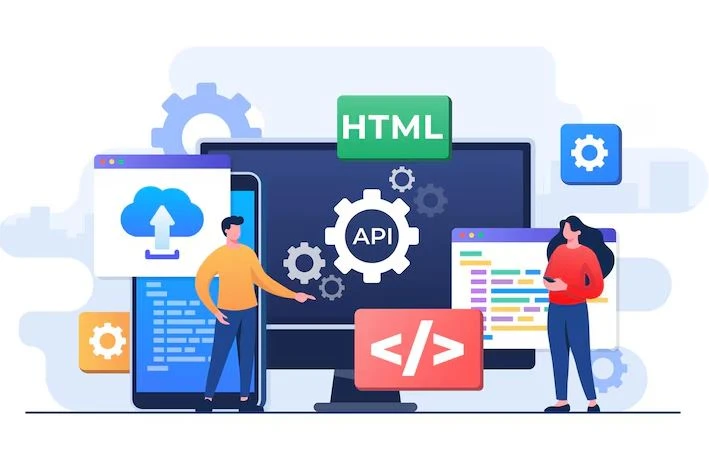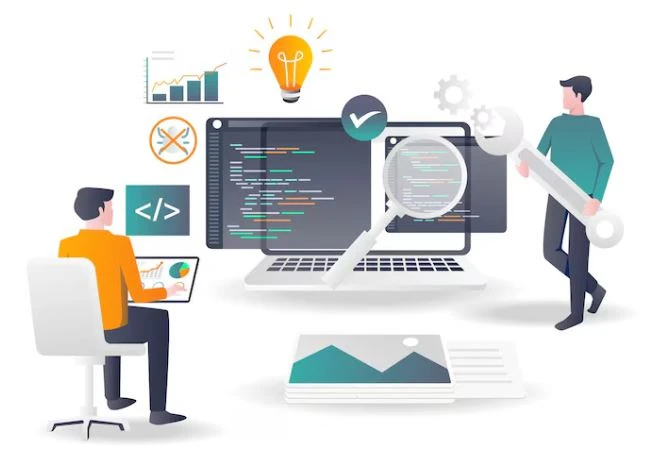Table of Content
A Step-by-Step Process Every Beginner Should Follow for Software Development
Many beginners frequently find themselves confused and overwhelmed when starting to build software from scratch. This confusion often stems from a lack of familiarity with the overall development process, tools, and best practices. Without a clear understanding, even simple tasks can feel daunting, leading to hesitation and self-doubt.
One of the primary reasons for this uncertainty is insufficient knowledge about the structured steps involved in software development. From initial planning and designing to coding, testing, and deployment, each phase has its own significance and requirements. Beginners who aren’t aware of this sequence may struggle to stay organized and productive, which can impact the quality and performance of their software development services.
Gaining a thorough understanding of the software development pathway is essential for building confidence and competence. When you know what each stage involves and why it’s important, you’re better equipped to tackle challenges methodically. In this blog, we will take a look at these steps in detail, so that you can firmly understand how a software should be developed from the scratch.
Importance of Learning Phase-wise Development Process

Learning the phase-wise development process is crucial because it provides a structured roadmap for creating software efficiently and effectively. Each phase such as requirement gathering, design, development, testing, deployment, and maintenance—serves a distinct purpose and ensures that no critical aspect is overlooked. By understanding these phases, developers can break down complex projects into manageable parts, making the entire process less overwhelming and more organized.
This step-by-step approach also improves communication and collaboration within a development team. When everyone understands the current phase and its objectives, it becomes easier to assign tasks, track progress, and maintain consistency. Additionally, phase-wise development helps in early detection of issues or risks, reducing the chances of major problems later in the project. It ensures that each component is thoroughly planned and tested before moving forward.
Moreover, mastering this process builds a strong foundation for long-term success in software development. It encourages developers to think critically, plan ahead, and work systematically—skills that are essential in both academic and professional environments. Whether working on personal projects or collaborating with a team in a company, knowing the phase-wise development model helps deliver high-quality software that meets user needs and industry standards.
Building Software from Scratch: Know the Complete Step-by-Step Process

Being a beginner, you won’t know how to manage different stages of software development. This is a real issue that hampers the concept of many beginners. If you are also one of them, take a look at step-by-step explanation of the development process given below.
Understand Your Customers
Understanding the customer segment before developing software is essential because it ensures the final product aligns with the needs, and behaviors of the intended users. By identifying who the target customers are—such as their age group, profession, technical skills, and pain points—developers can design features and interfaces that truly solve their problems. This user-centered approach increases the chances of creating a product that is both functional and appealing, which leads to higher user satisfaction and adoption rates.
Additionally, a clear understanding of the customer segment helps in making informed decisions throughout the development process, from choosing the right technology stack to defining the software’s core functionalities. It reduces the risk of building irrelevant or unnecessary features and allows for better marketing strategies post-development. Ultimately, knowing your audience not only improves the effectiveness of the software but also contributes to its commercial success in a competitive market.
Research the Market
Researching the market before developing software involves gathering information about current trends, competitors, and potential user needs to ensure there is a demand for your product. This can be done by analyzing industry reports, studying successful apps or platforms in similar niches, and reviewing user feedback on existing solutions. Surveys, interviews, and focus groups with your target audience can provide valuable insights into what users like, dislike, and expect from software in that domain.
In addition to understanding user preferences, market research also helps identify gaps or opportunities that your software can address. By evaluating competitors’ strengths and weaknesses, you can design a product that offers unique features or better performance. This research guides strategic planning, minimizes risks, and lays a strong foundation for creating a software solution that stands out and meets real market needs.
Get cutting-edge ERP software solutions built according to your business demands. Hire our dedicated teams to build advanced custom products.
Get a QuotePrepare a Plan
Project planning plays a vital role in laying the foundation for a bespoke software development process. It involves clearly defining the entire scope of the project, which includes outlining the goals, deliverables, tasks, and the overall vision of the software. This step ensures that everyone involved understands what the final product should achieve. Additionally, project planning helps identify potential risks and sets the stage for proactive problem-solving, making it easier to navigate challenges as the project progresses.
Beyond defining the scope, effective project planning also focuses on organizing the development team, and establishing smooth collaboration workflows. It includes setting up communication protocols, determining the platforms to be used, and creating a realistic timeline with milestones and deadlines. Budget estimation is another key aspect, as it ensures that the project remains financially viable by forecasting costs related to development. In essence, thorough project planning brings structure, clarity, and efficiency to the entire development lifecycle.
Start Coding the Software
Once the project plan is finalized, the first step in coding a software application is to set up the development environment. This includes selecting the appropriate programming languages, frameworks, libraries, and tools based on the project’s functional requirements. Developers should also configure version control systems like Git to manage code changes effectively. Creating a well-organized project structure at this stage is crucial, as it helps maintain clean, scalable, and manageable code throughout the development cycle.
With the environment ready, developers begin by implementing the core architecture of the software, following the design and technical documentation created during the planning phase. This usually starts with building foundational components such as the database schema, API endpoints, or user authentication systems. Development should proceed module by module or feature by feature, often using Agile methodologies to allow for iterative progress and regular testing.
Test the Application
After completing the development of a software application, the next crucial step is testing to ensure the product functions as intended. This process typically begins with unit testing, where individual components or modules of the software are tested in isolation to verify that each part performs correctly. Following that, integration testing is conducted to check whether different modules work together seamlessly. Automated testing tools can be used for efficiency, while manual testing helps catch issues that automation might miss.
Once the internal structure is verified, system testing and user acceptance testing (UAT) are carried out. System testing evaluates the complete and integrated software to ensure it meets the specified requirements. UAT involves real users testing the software in a controlled environment to confirm that it solves the problems it was designed for. During these phases, testers document bugs, usability issues, and performance problems, which developers then fix before final deployment.
Frequently Asked Questions
| Why businesses need a software system? Businesses need a software system to streamline operations, improve efficiency, and support data-driven decision-making. It helps automate tasks, enhance customer experiences, and stay competitive in the digital marketplace. |
| Why market research is important for software development? Market research is important for software development because it helps identify user needs, market trends, and potential gaps. It ensures the software is relevant, competitive, and tailored to meet real-world demands. |
| How to start coding from scratch? To start coding from scratch, first choose the appropriate programming language and set up your development environment. Then, break down the project into smaller tasks, write clean code, and test each component as you go along to ensure functionality. |
Final Words
This brings us to the end of our article, where we’ve explored a range of valuable tips to help you build a software from scratch. Creating a high-quality software product is crucial, as it significantly contributes to a brand’s success and competitiveness in the market. A well-structured development approach ensures that the final product meets both user expectations and business goals.
By applying the strategies outlined above, you can create a comprehensive development plan that addresses every critical phase of the process. These insights aren’t just useful for beginners; they also serve as a helpful guide for experienced professionals aiming to build software from scratch while adhering to modern industry standards.
Empower your digital initiatives with BariTechSol, a premier custom software development company. Our skilled team tailors cutting-edge solutions to your unique needs. Elevate your tech experience and stay ahead in the digital realm. Partner with BaritechSol and code the success of your next big idea.


